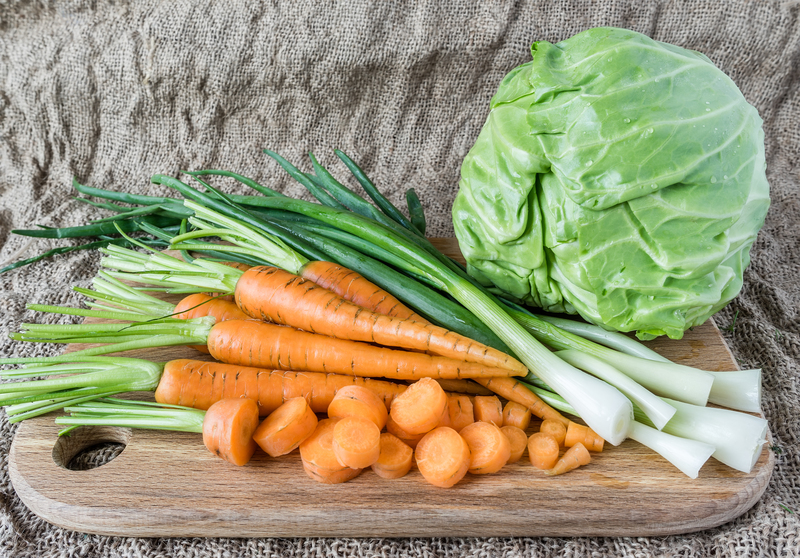Spring Gardening Guide
Posted on 02/08/2024
Spring is a magical time for gardeners. It's a period of rebirth, renewal, and growth. As the earth warms and days lengthen, plants wake from winter's slumber, offering the perfect opportunity to jumpstart your garden. Whether you're a seasoned green thumb or a novice looking to dabble in horticulture, this Spring Gardening Guide will provide you with all the essentials to make the most of the season.
1. Preparing Your Garden
Before planting, it's crucial to prepare your garden to ensure optimal growth and yield. Here are key steps:
1. Soil Testing and Preparation: Start by testing your soil's pH levels. Most plants prefer a pH between 6.0 and 7.0. Amend the soil with compost or organic matter if needed to improve drainage and nutrient content.
2. Clearing Debris: Remove winter debris, such as dead leaves and branches. This will help prevent diseases and pests from affecting your new plants.
3. Tilling: Turn the soil to aerate and mix in fresh compost. This helps roots penetrate the soil more easily.

2. Choosing the Right Plants
Selecting the right plants for your garden is essential. Consider your local climate, soil conditions, and the amount of sunlight your garden receives. Here are some spring favorites:
1. Vegetables: Lettuce, spinach, radishes, and peas are excellent early spring vegetables. They thrive in cooler temperatures and are quick to mature.
2. Flowers: Daffodils, tulips, and crocuses are popular spring flowers that add vibrant color to your garden.
3. Herbs: Mint, chives, and parsley are hardy and can be planted early in the season.
3. Planting Techniques
The success of your garden largely depends on how you plant. Follow these guidelines:
1. Seed Starting: Start seeds indoors 6-8 weeks before the last frost date. Use seed trays and ensure they have adequate light and water.
2. Direct Sowing: For cold-resistant plants, sow seeds directly into the garden once the soil is workable.
3. Transplanting: Harden off indoor-grown seedlings by gradually exposing them to outdoor conditions. Transplant them when the risk of frost has passed.
4. Maintenance and Care
Once your garden is planted, ongoing maintenance is key to a bountiful harvest.
1. Watering: Monitor soil moisture carefully. Seedlings require consistent watering, while established plants can tolerate less frequent watering.
2. Weeding: Keep weeds at bay by regularly removing them. Mulch around plants to retain moisture and suppress weed growth.
3. Fertilizing: Use organic fertilizers to provide necessary nutrients. Be cautious with nitrogen, as too much can lead to lush foliage but poor flowering or fruiting.
5. Dealing with Pests and Diseases
Spring gardens can attract various pests and diseases. Practice preventive measures and take action when needed.
1. Companion Planting: Planting certain plants together can naturally repel pests. For example, marigolds deter aphids.
2. Natural Predators: Encourage beneficial insects like ladybugs and predatory beetles to control pest populations.
3. Organic Treatments: Use organic pesticides and fungicides if necessary. Always follow manufacturer instructions.
Pros and Cons of Spring Gardening
Pros:
- Early Harvest: Certain vegetables and flowers mature quickly, allowing for an early harvest.
- Extended Growing Season: By starting in spring, you can maximize your garden's productivity.
- Vibrant Blooms: Spring flowers add beauty and color to your landscape.
Cons:
- Unpredictable Weather: Late frosts and heavy rains can damage tender plants.
- Pests: Emerging insects can target young plants.
- Labor Intensive: Initial preparation and planting can be physically demanding.
Tips for a Successful Spring Garden
1. Plan Ahead: Sketch your garden layout and decide on plant varieties early.
2. Year-Round Composting: Start a compost pile to enrich your soil naturally.
3. Succession Planting: Stagger plantings to ensure continuous harvests throughout the season.

Takeaways
- Start Early: Proper preparation and early planting are critical for success.
- Monitor and Adapt: Keep a close eye on weather and plant health, and adjust as needed.
- Enjoy the Process: Gardening is as much about the journey as it is about the end result.
Conclusion
Spring gardening offers a rewarding experience for enthusiasts and beginners alike. By following this guide, you can cultivate a thriving and beautiful garden that will bring joy and bountiful harvests. Remember that every garden is unique, so be patient and enjoy the continuous learning process. Happy gardening!



